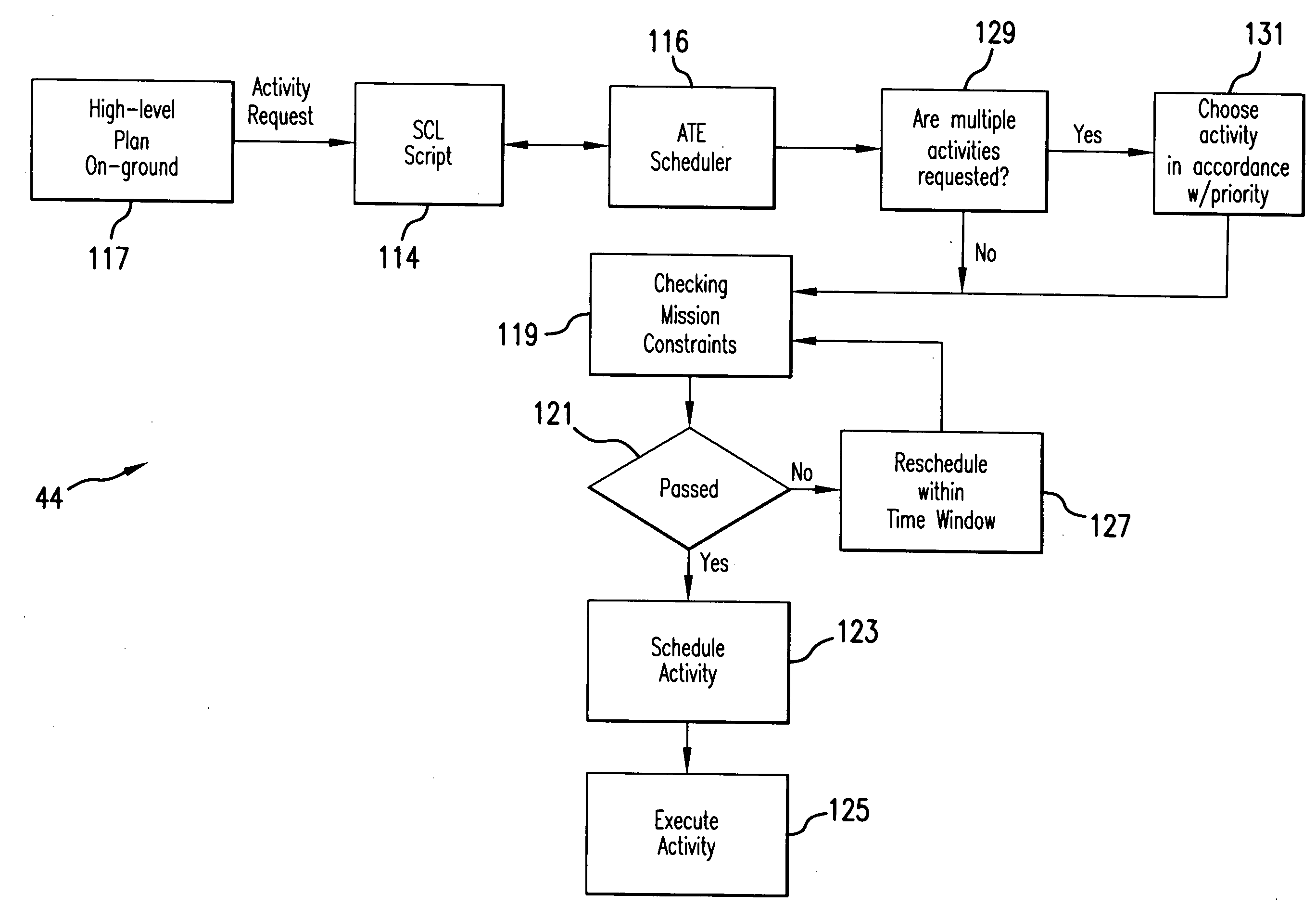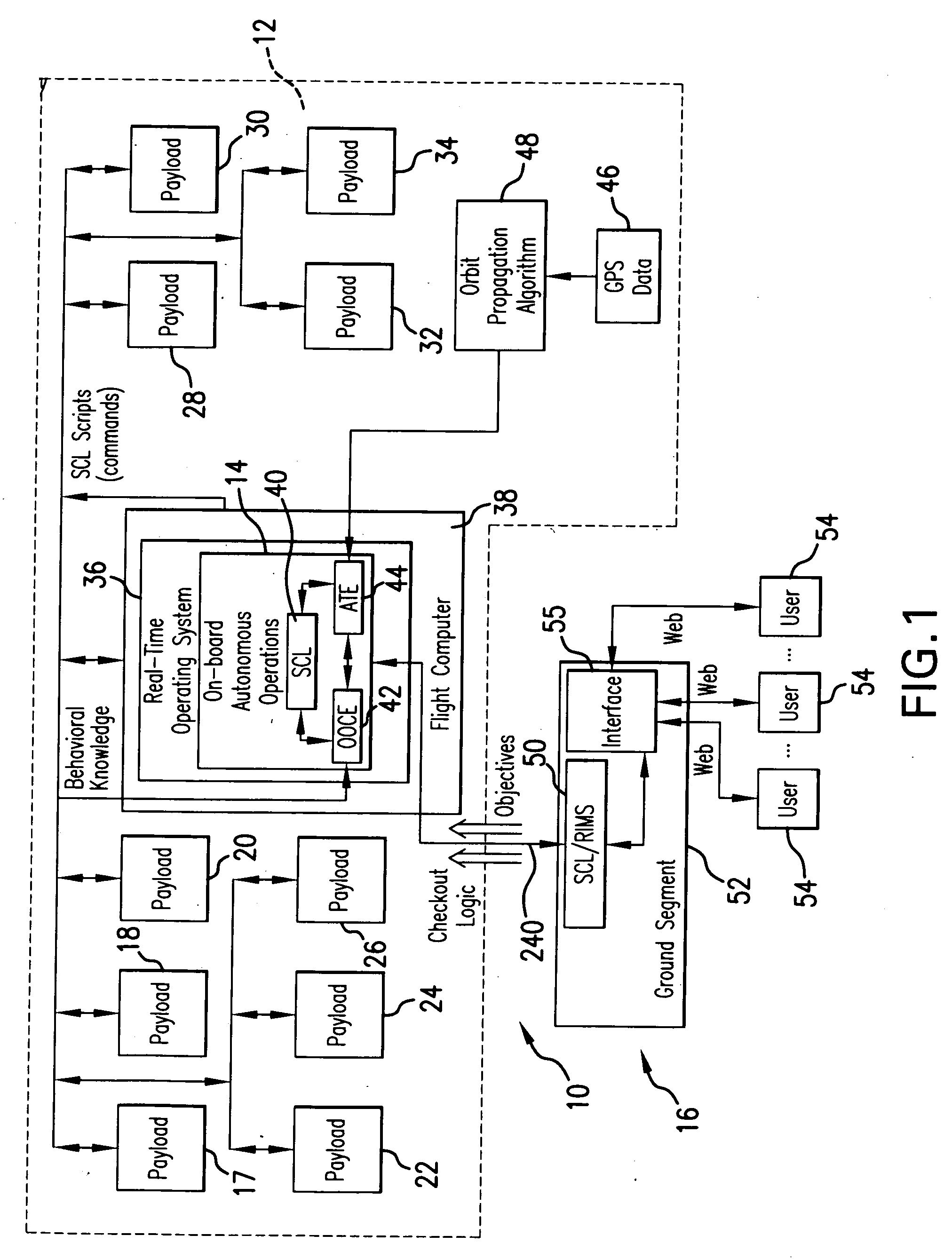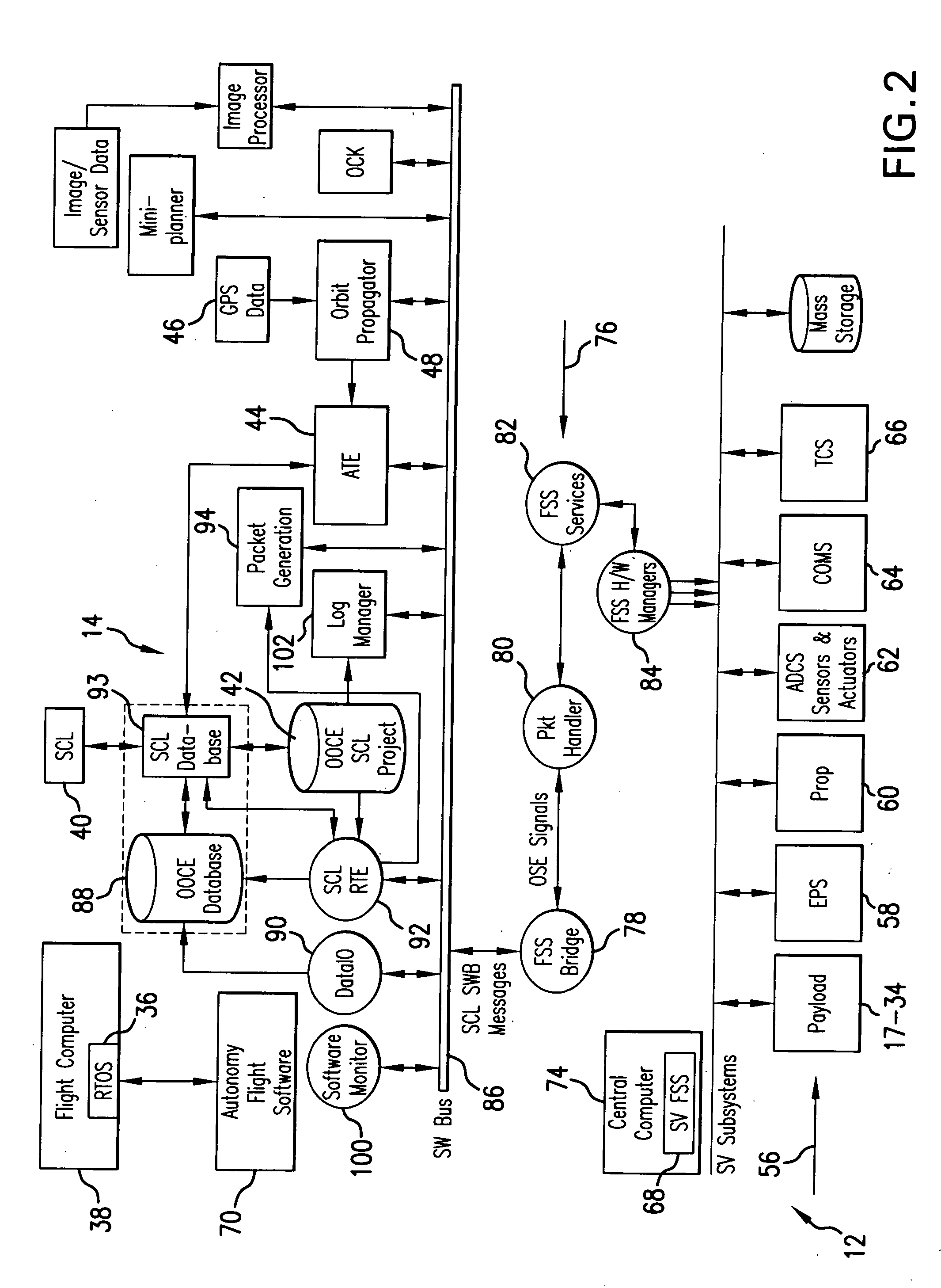Intelligent system and method for spacecraft autonomous operations
a spacecraft and autonomous operation technology, applied in the field of intelligent systems and methods for spacecraft autonomous operations, can solve the problems of manpower and hardware, task close to impossible, and inability to plan and schedule, so as to increase the effective spacecraft mission lifetime, reduce time latency, and increase responsiveness.
- Summary
- Abstract
- Description
- Claims
- Application Information
AI Technical Summary
Benefits of technology
Problems solved by technology
Method used
Image
Examples
Embodiment Construction
[0073]Referring to FIG. 1, the intelligent control and command system 10 for operating a spacecraft 12 (also interchangeably referred to herein as a satellite) includes an on-board autonomous operations system 14 and a remote monitoring system 16 communicating with the on-board autonomous system 14, as will be described in detail in following paragraphs.
[0074]As an example, and without limiting the scope of protection and the range of applicability of the present invention to a specific spacecraft, the following disclosure relates to the TacSat-2 satellite designed to be the first in a series of satellites to support the goals of the Operationally Responsive Space (ORS) initiative in the Airforce Research Laboratory. However, the system of the present invention is also applicable to other spacecraft systems. The TacSat-2 satellite has an ambitious schedule and integrates 11 payloads, in addition to the Autonomous Operations System payload 14 designed by the Applicant of the present ...
PUM
 Login to View More
Login to View More Abstract
Description
Claims
Application Information
 Login to View More
Login to View More - R&D
- Intellectual Property
- Life Sciences
- Materials
- Tech Scout
- Unparalleled Data Quality
- Higher Quality Content
- 60% Fewer Hallucinations
Browse by: Latest US Patents, China's latest patents, Technical Efficacy Thesaurus, Application Domain, Technology Topic, Popular Technical Reports.
© 2025 PatSnap. All rights reserved.Legal|Privacy policy|Modern Slavery Act Transparency Statement|Sitemap|About US| Contact US: help@patsnap.com



